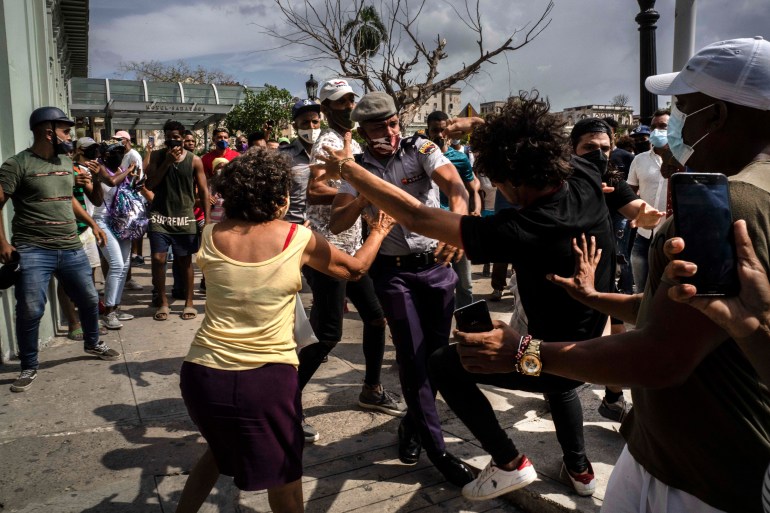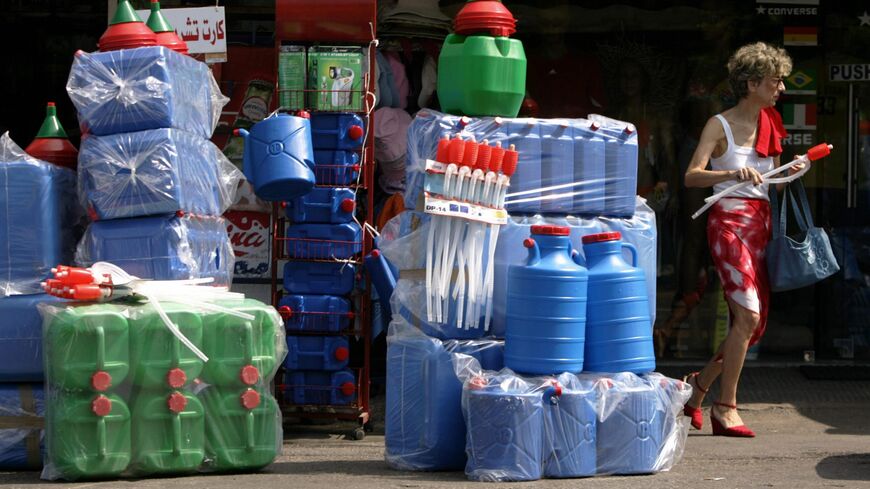If Biden truly wants to put principles, and effectiveness, ahead of politics, he should make a bold choice and end the embargo.
Christopher Rhodes
21 Jul 2021

For nearly 60 years, the United States has enforced an embargo against Cuba, severely restricting the flow of goods to the island. Most US companies are forbidden from dealing with Cuba, and various US laws punish foreign companies that do business in Cuba. The restrictions are meant to economically squeeze the island and create enough discontent within Cuba to force the ruling Communist Party to either significantly reform or step down.
The Obama administration, with then-Vice President Biden’s support, sought to rethink the policy and pursue re-engagement with Cuba. Barack Obama relaxed sanctions, allowed direct flights between the two countries, and eased restrictions on Americans doing business in Cuba. Donald Trump reversed Obama’s strategy. He placed Cuba back on the US list of state sponsors of international terrorism, cut off travel between Cuba and the US, and barred Americans from sending remittances to their relatives in Cuba, cutting off a major economic lifeline for many Cubans.
Joe Biden promised to move away from this Trump strategy of “maximum pressures” against Cuba, but has so far not altered any of the Trump restrictions. The White House admitted earlier this year that “a Cuba policy shift is not currently among President Biden’s top priorities.”
However, the protests that have been rocking Cuba for the past week – some of the largest since the Revolution – have forced the issue. Many Cuban American activists and Republicans are urging Biden to keep up or even increase pressure on Cuba, and Democrats are divided on whether to maintain or ease the embargo.
The strongest reason to end the embargo against Cuba is the massive toll that the policy continues to enact on the Cuban population. Both the Cuban government and the United Nations have estimated that the embargo has cost the Cuban economy $130 billion over six decades. It’s also worth noting that the US Chamber of Commerce estimates that the embargo costs the US economy billions of dollars each year, as well. The human toll is harder to quantify, but has clearly been significant. Human rights experts at the UN have urged the US to ease sanctions during the COVID-19 pandemic, arguing that such a change will save lives by allowing Cuba greater access to medical supplies and equipment.
Cuba-policy hardliners have implicitly accepted the human and economic costs of the embargo as acceptable in order to achieve the goal of undermining the communist regime. They will point towards the unprecedented level of protests currently going on in Cuba as evidence that the embargo is working. It’s not. Yes, Cubans are angry at the economic hardships and pandemic suffering happening amongst their population. But as Cuban President Miguel Díaz-Canel uses repression and anti-US rhetoric to contain the protests, there’s little indication that the regime is in immediate danger.
The communist regime has already survived the fall of its Soviet sponsor, the death of Fidel Castro, and the handover of power from his younger brother Raul to Díaz-Canel, who is not a Castro and was born after the Revolution took power. Sixty years of sanctions have only created hardships for the Cuban people while providing the regime with a convenient scapegoat to blame for all of their country’s economic woes and societal discontent.
Counterintuitively, ending the embargo and promoting ties between the US and Cuba is the greatest weapon that America can deploy against the oppressive regime in Cuba. President Obama laid out the strategy when he opened up travel between the two countries: “Nobody represents America’s values better than the American people,” Obama said in 2014, “and I believe this contact will ultimately do more to empower the Cuban people.”
Exposing Cubans to the freedoms and opportunities available to their American relatives will increase outrage and pressure towards the Cuban government for failing to provide these things. And removing the ability of the Communist Party to blame the United States for its own failures will lay bare the consequences of the Cuban government’s unwillingness to shift away from Soviet-era economic policies and political repression.
Hardliners will argue that easing the embargo now will lessen the pressure on the Cuban government by lessening the societal desperation that has fuelled these protests. And while economic crises can lead to collective outrage, spontaneous protests against authoritarian regimes usually ends in renewed repression rather than regime change. Many experts believe that movements for social change are most effective when people and organisations gain the resources that are necessary for sustained political and social activism. Loosening the economic vice grip on Cuba will help to empower its citizens and civil society to stand up to their government.
The administration should be thoughtful about how it rethinks the embargo policy. It need not eliminate the policy all at once, nor should it relent on pressuring Cuba when it comes to democracy or human rights. But being thoughtful should not be an excuse for inaction. For example, rather than dismissing the idea of renewing remittances to Cuba, Biden should seriously explore ways to allow Americans to securely transfer money to their Cuban relatives.
Relaxing the embargo will be a risky political move for the president. Biden lost Florida in the 2020 election after underperforming among Latino voters, and a radical change in policy towards Cuba could risk alienating parts of the Cuban American population in the state.
Republicans will no doubt accuse the president of being soft on communism or caving in to progressive demands. But if Biden truly wants to put principles, and effectiveness, ahead of politics, he should make a bold choice and end six decades of US failure and Cuban suffering.
The views expressed in this article are the author’s own and do not necessarily reflect Al Jazeera’s editorial stance.

Christopher Rhodes
Lecturer in Government at Harvard University and lecturer in Social Sciences at Boston University.
Dr Christopher Rhodes is a lecturer in Government at Harvard University and lecturer in Social Sciences at Boston University. He is the author of the upcoming book Evangelical Violence: Christian Nationalism, the Great Commission and a Millennium of "Holy" Warfare and co-editor of the volume Conflict, Politics, and the Christian East: Assessing Contemporary Developments.










